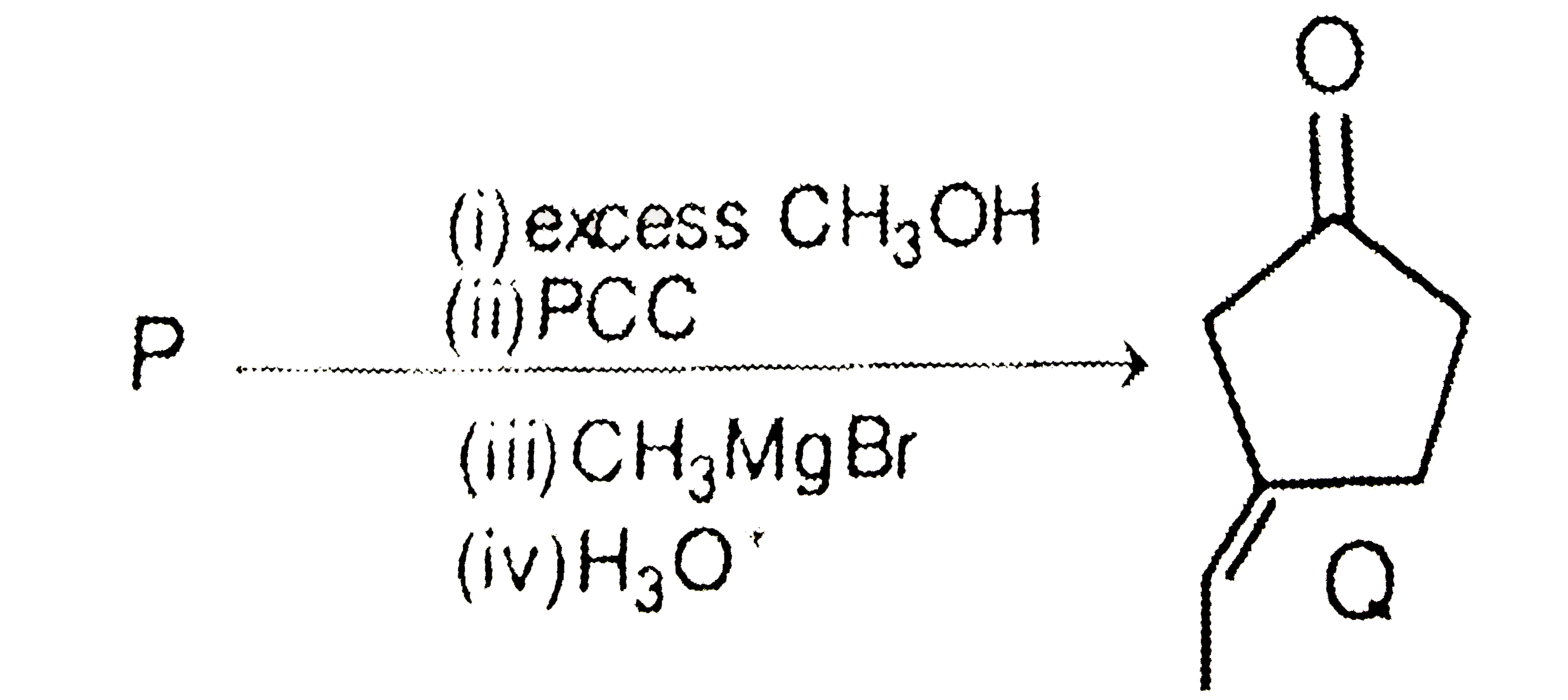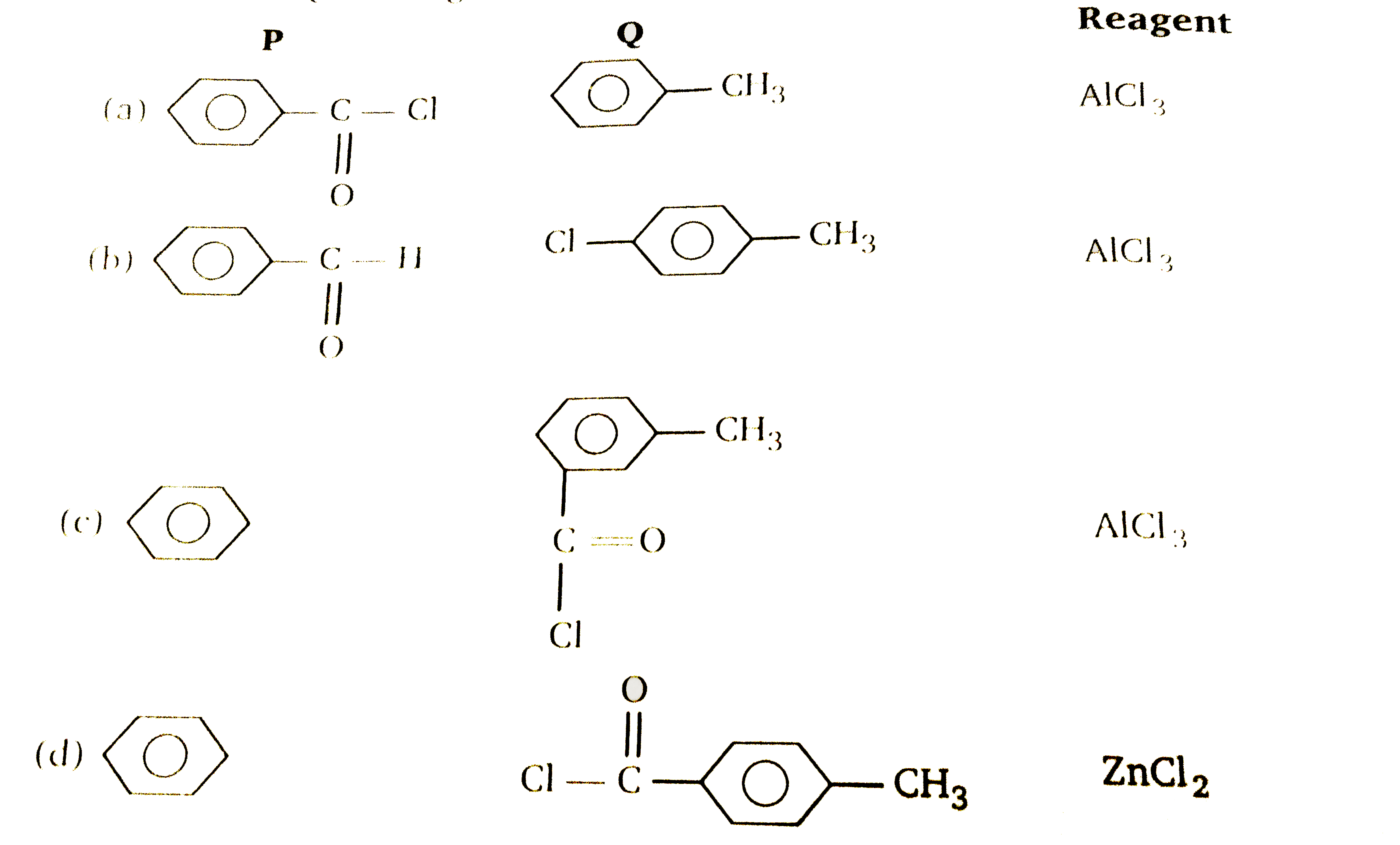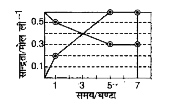PARAGRAPH “A”An organic acid P C11H12O2 can easily be oxidized to a dibasic acid which reacts with ethylene glycol to produce a polymer dacron. Upon ozonolysis P gives an aliphatic ketone as one of the products. P undergoes the following reaction sequences to furnish R via Q. The compound P also undergoes another set of reactions to produce S.There are two questions based on PARAGRAPH A the question given below is one of themThe compound R is
Answer: ASolution:
Related Solutions
An organic acid P (C_(11)H_(12)O_(2)) can easily be oxidized to a dibasic acid which reacts with ethyleneglycol to produce a polymer dacron. Upon ozonolysis, P gives an aliphatic ketone as one of the products. P undergoes the following reaction sequences to furnish R via Q. The compound P also undergoes another set of reactions to produce S. The compound R is
View SolutionAn organic acid P can easily be oxidized to a dibasic acid which reacts with ethyleneglycol to produce a polymer dacron. Upon ozonolysis, P gives an aliphatic ketone as one of the products. P undergoes the following reaction sequences to furnish R via Q. The compound P also undergoes another set of reactions to produce S.
The compound S isView SolutionAn organic acid P (C_(11)H_(12)O_(2)) can easily be oxidized to a dibasic acid which reacts with ethyleneglycol to produce a polymer dacron. Upon ozonolysis, P gives an aliphatic ketone as one of the products. P undergoes the following reaction sequences to furnish R via Q. The compound P also undergoes another set of reactions to produce S. The compound S is
View SolutionPassage - VI An organic acid P(C_11H_12O_2) Can easily be oxidized to dibasic acid, which upon reaction with ethylene glycol produces a dilute dacron. When ozonolysis occurs, P gives an aliphatic ketone as a product. P gives R by creating Q in the following reaction sequences. Compound P also produces 5 via a set of other reactions. Compound R is
View SolutionPassage - VI An organic acid P(C_11H_12O_2) Can easily be oxidized to dibasic acid, which upon reaction with ethylene glycol produces a dilute dacron. When ozonolysis occurs, P gives an aliphatic ketone as a product. P gives R by creating Q in the following reaction sequences. Compound P also produces 5 via a set of other reactions. Compound S is
View Solutionएक कार्बनिक अम्ल का आसानी से द्विक्षारकीय अम्ल में ऑक्सीकरण किया जा सकता है, जो एथिलीन ग्लाइकोल के साथ अभिक्रिया करने पर एक बहलक डेक्रोन उत्पादित करता है। ओजोनोलिसिस होने पर, P एक ऐलिफैटिक कीटोन, एक उत्पाद के रूप में देता है। P निम्नलिखित अभिक्रिया अनुक्रमों में Q बनाकर R देता है। यौगिक P दूसरी अभिक्रियाओं के समुच्चय से भी होकर 5 उत्पादित करता है

यौगिक R हैView Solutionएक कार्बनिक अम्ल का आसानी से द्विक्षारकीय अम्ल में ऑक्सीकरण किया जा सकता है, जो एथिलीन ग्लाइकोल के साथ अभिक्रिया करने पर एक बहलक डेक्रोन उत्पादित करता है। ओजोनोलिसिस होने पर, P एक ऐलिफैटिक कीटोन, एक उत्पाद के रूप में देता है। P निम्नलिखित अभिक्रिया अनुक्रमों में Q बनाकर R देता है। यौगिक P दूसरी अभिक्रियाओं के समुच्चय से भी होकर 5 उत्पादित करता है

यौगिक S हैView SolutionAn orgnaic acid P(C_(11)H_(12)O_(2)) can easily be oxidized to a dibasic acid which reacts with ethyleneglycol to product a polymer dacron. Upon ozonolysis, P gives an aliphatic ketone as one of the products. P undergoes the following reaction sequences to furnish R via Q. the compound P also undergoes another set of reactions to produce S. Sunderset((4)." "CHCl_(3),KOH,Delta,(5)." "H_(5)//Pd-C)overset((1)." "H_(2)//Pd-C,(2)." "NH_(3)//Delta,(3)." "Br_(2)//NaOH)larrPunderset((3)." "MeMgBr,CdCl_(2),(4)." "NaBH_(4))overset((1)." "H_(2)//Pd-C,(2)" "SOCl_(2))toQunderset((3)." "CO_(2),("dry ice"),(4)." "H_(3)O^(+)) overset((1)." "HCl,(2)." "Mg//Et_(2)O)to Q. The compound S is
View SolutionCompound 'P' that undergoes the sequence of reactions given below to give the product Q is
 View Solution
View SolutionCompound 'P' that undergoes the sequence of reactions given below to give the product Q is
 View Solution
View SolutionA carbonyl compound P,which gives positive iodoform test, undergoes reaction with MemgBr followed by dehydration to give an Olefin Q. Ozonolysis of Q leads to a dicarbonyl compound R, which undergoes intramolecular aldol reaction to give predominantly S. The structure of the carbonyl compound P is
View SolutionP and Q undergo acid hydrolysis.

The product obtained can be distinguished byView SolutionA carbonyl compound P,which gives positive iodoform test, undergoes reaction with MemgBr followed by dehydration to give an Olefin Q. Ozonolysis of Q leads to a dicarbonyl compound R, which undergoes intramolecular aldol reaction to give predominantly S.
The structure of the products Q and R, respectively, areView SolutionIn the following reaction, P gives two products Q and R, each in 40% yield
 If the reaction is carried out with 420 mg of P. the reaction yields 108.8 mg of Q. The amount of R produced in the reaction is closesr toView Solution
If the reaction is carried out with 420 mg of P. the reaction yields 108.8 mg of Q. The amount of R produced in the reaction is closesr toView SolutionA carbonyl compound P,which gives positive iodoform test, undergoes reaction with MemgBr followed by dehydration to give an Olefin Q. Ozonolysis of Q leads to a dicarbonyl compound R, which undergoes intramolecular aldol reaction to give predominantly S.
The structure of the product S isView SolutionTwo aromatic compounds P and Q give product R.

Reactant P, Q and reagent used in above reaction are:
 View Solution
View Solutionp-तालूइन सल्फोनिक अम्ल की उपस्थिति में एथिलीन ग्लाइकोल एसीटैल्डिहाइड के साथ अभिक्रिया करके बनाता है-
View Solutionनिम्न पैराग्राफ को पढ़िए तथा पैराग्राफ पर | आधारित प्रश्नों का उत्तर दीजिए।
एक अभिक्रिया, की बढ़ोत्तरी समय के साथ निम्न ग्राफ में प्रदर्शित की गई है।

n का मान होगाView SolutionCompound P on treatement with CH_(2)N_(2) (diazomethane) produces compound Q. compound Q on reaction with Hl produces two alkyl iodides R and S . Alkyl iodide S with higher number of carbon atoms on reaction with KCN followed by hydrolysis gives 3-methylbutanoic acid. the compound P is
View SolutionIn the given reaction, only one alkene undergo preferential oxidation alkene undergo preferential oxidation by electrophilic ozone. Identify product (P) of the given reaction:
 View Solution
View Solution
